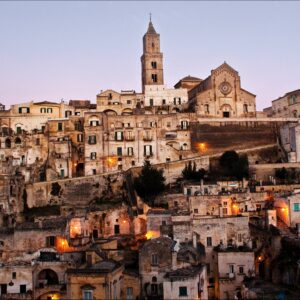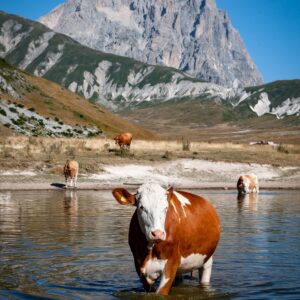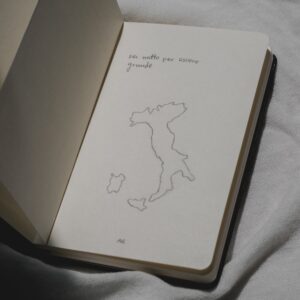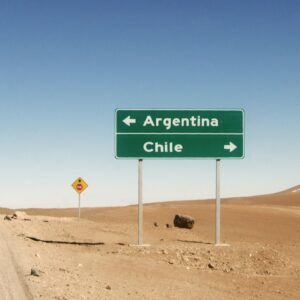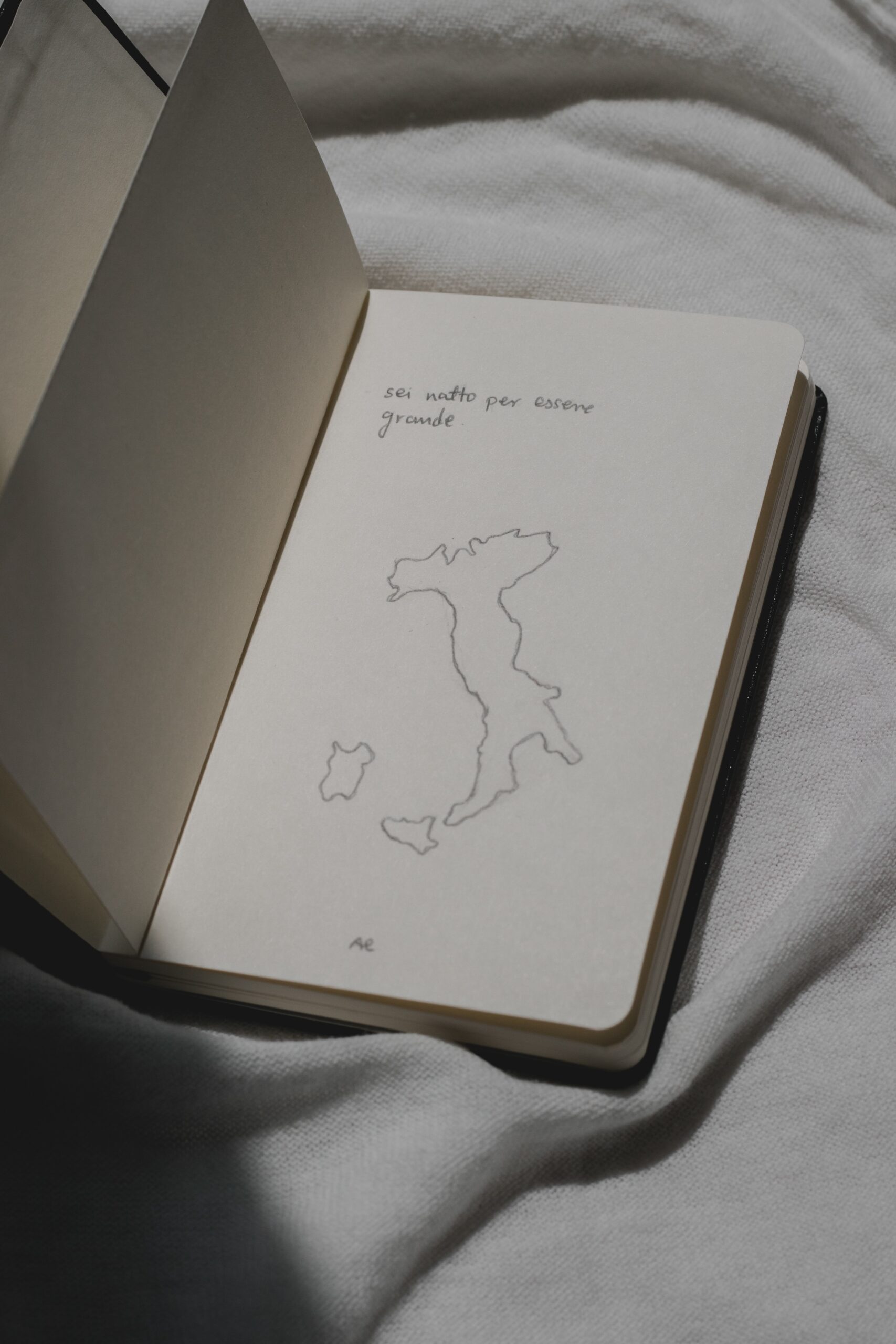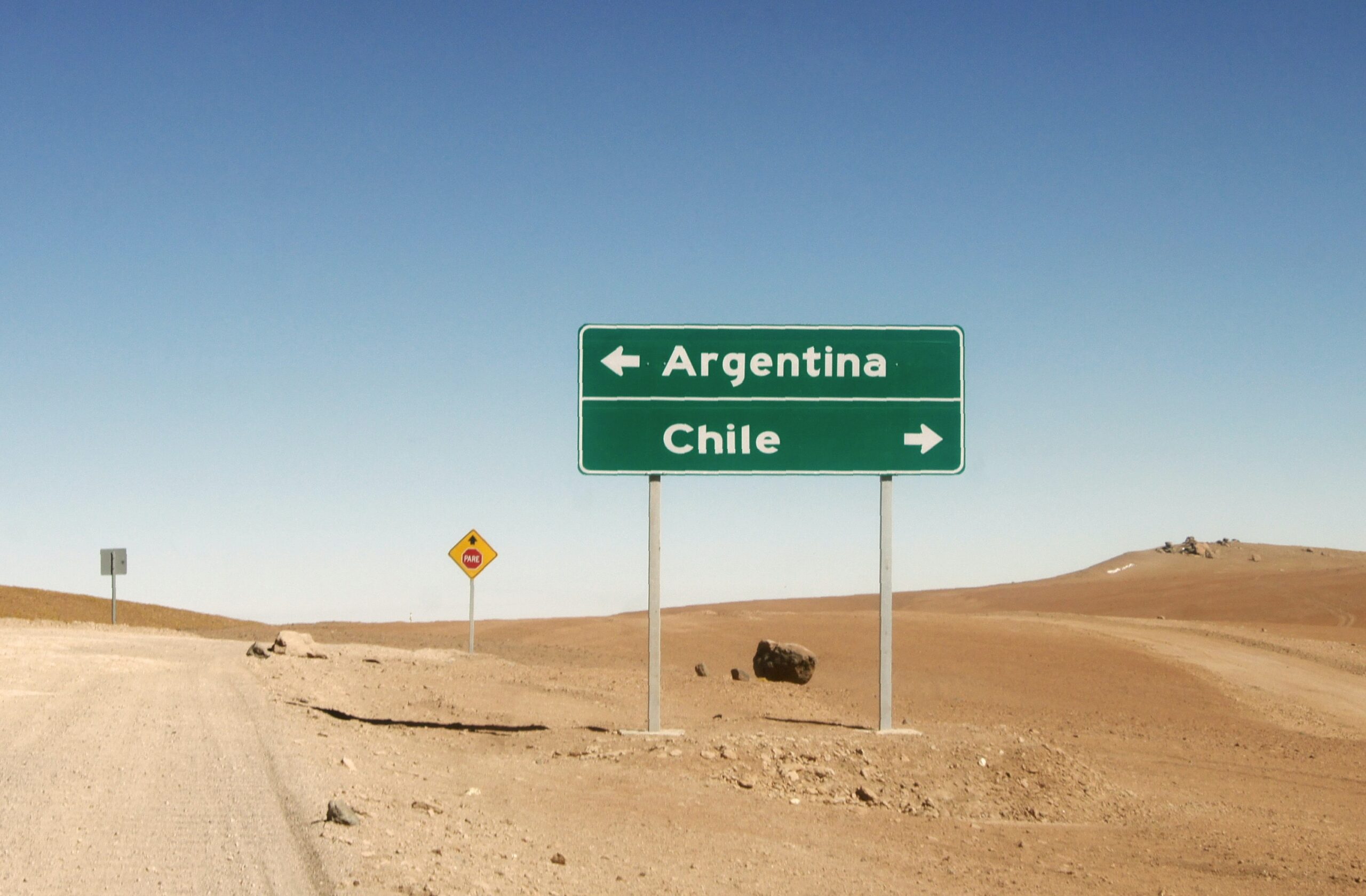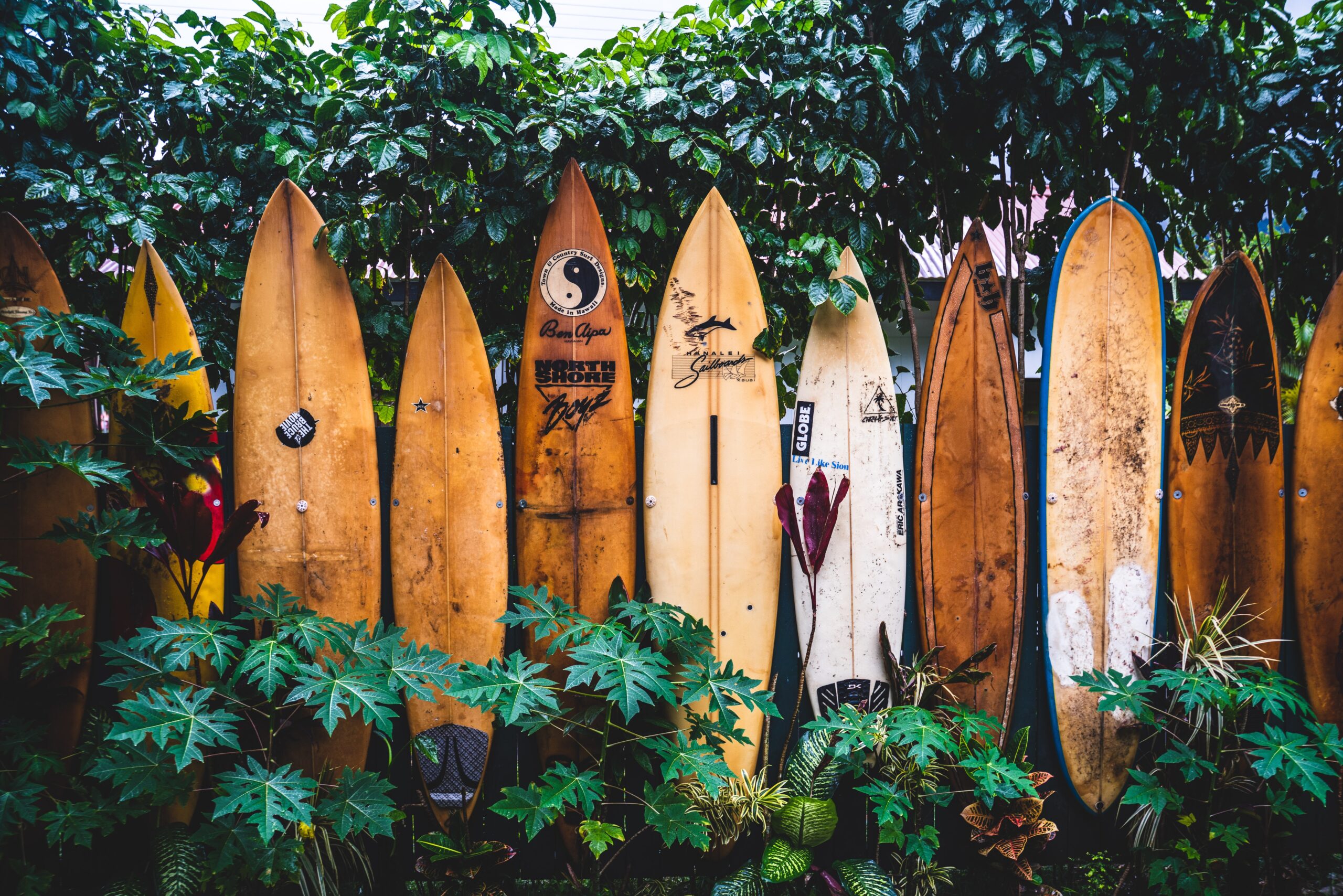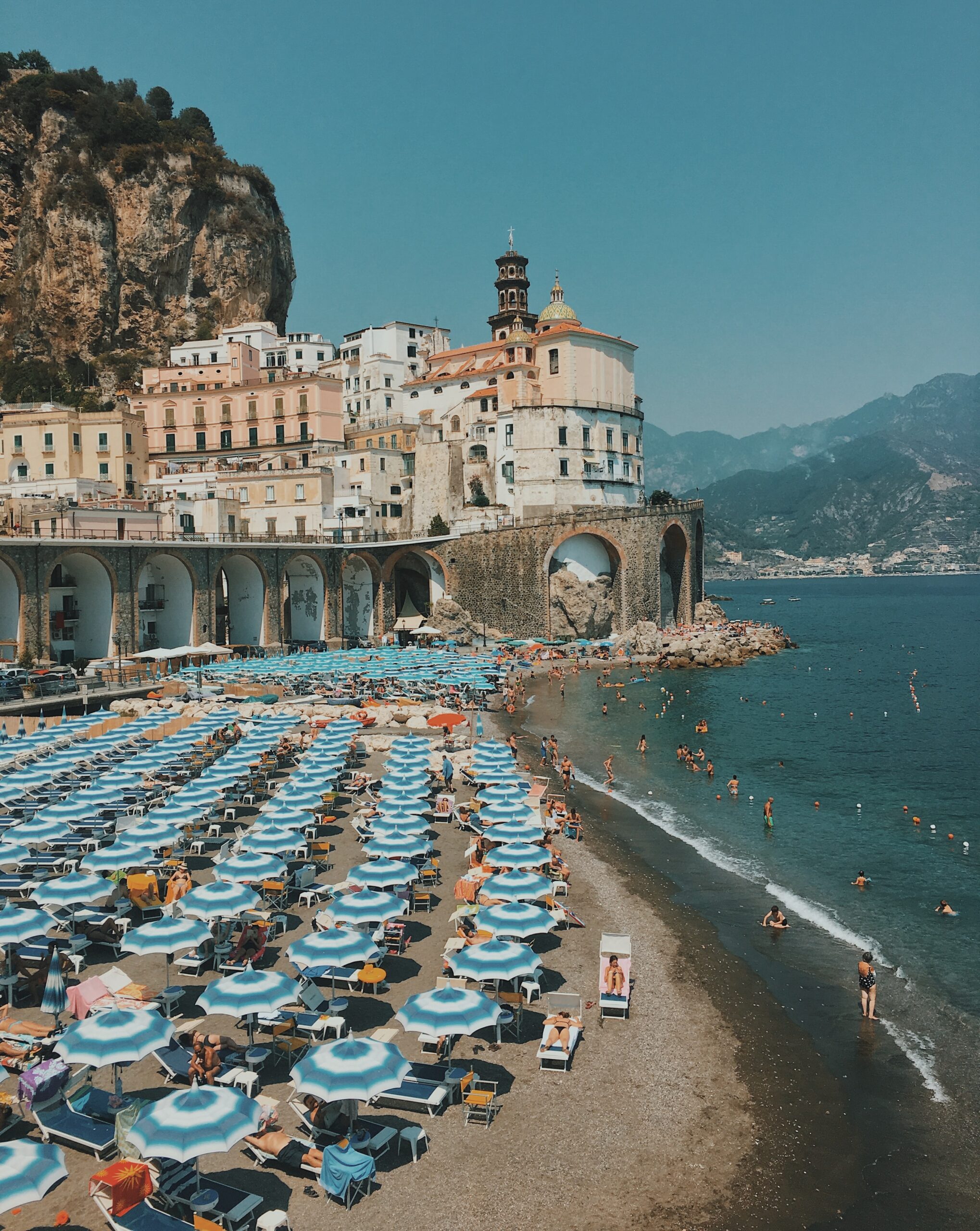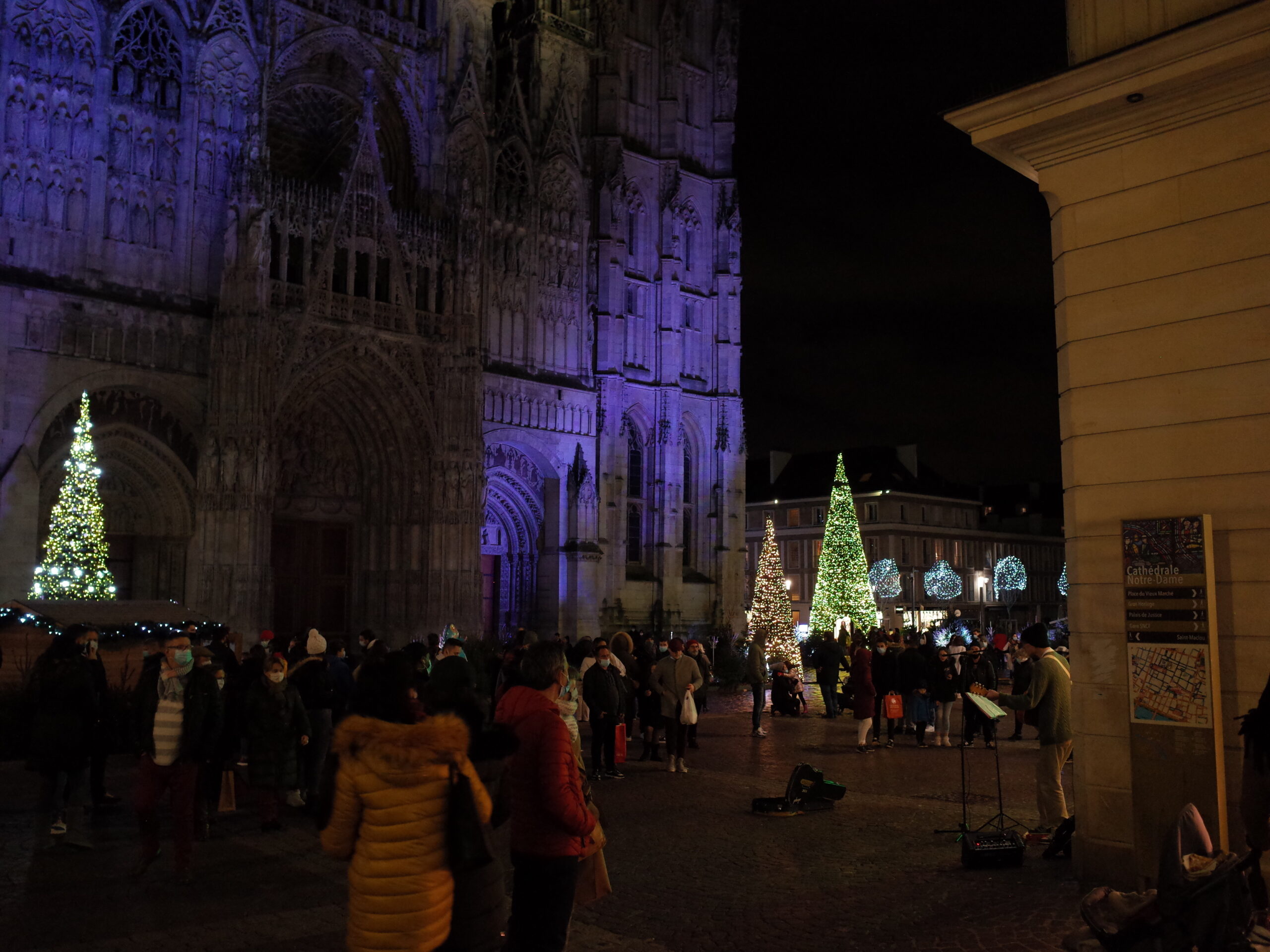
In December 2020, I spent a weekend in Rouen, the capital of Normandy. It was a fairly spontaneous decision. While I had been thinking of going somewhere, after spending Christmas at home, the urge to travel grew irresistible.

At the time, travelling was far from easy, however. We had only recently emerged from a second lockdown, and the government had just initiated a 6pm curfew. This meant that if you were caught outside after 6pm without a valid authorisation, you could face a €€€ fine.

Naturally, such a policy made travelling complicated. Because if you’re only visiting a new place for a short time, the curfew would only make it shorter.

But after spending so long in government-imposed hibernation, I just had to get out and go somewhere.

While Rouen wasn’t originally on my bucket list, it did tick a lot of boxes. As it’s in Normandy, just north-east of Paris, it only takes about an hour and a half to get there.

Considering that my daily commute was about 70 minutes long at the time, the journey would have been super quick — and would give me as much time as possible outside before the curfew would come into effect.

I had also been curious about Normandy for a while. My family had at one point considered moving to Guernsey, a Channel Island and British Protectorate just off the coast of Normandy. But then 2008 came along, and with it the Global Financial Crisis. While we never made the move, I remained curious to know what my life might once had become.

One of the first things that caught my eye was the architecture. Though Rouen is relatively close to Paris, the architecture was dramatically different. Parisian architecture is exemplified by the Haussmannian building, the six-storey stone edifice with a dark blue roof.

In Rouen, however, I saw a lot of traditional colourful wooden buildings (or at least with a wooden exterior) with a striped patterns. There were also plenty of brick buildings that made me feel like I was in Northern Europe, which indeed I was.

I suppose one of the reasons that the architectural styles differ so drastically between these cities is due to their different histories. As the name suggests, the Normans had originally come from Scandinavia. The French royal family was afraid that the Normans would take control of the Seine river, so to maintain control of it, they offered the Normans land and titles in return for protecting the Seine and other parts of France from other invaders. The Normans would later intermarry with locals and become French themselves, before eventually conquering England in 1066.

The Scandinavian heritage can be seen in a stone carving of a drakkar, a Scandinavian boat that the Vikings used for warfare, transport and trade.

When I arrived in Rouen that Boxing Day, the sky was an ominous grey. As winter had just begun, the most depressing days were upon us. The sun was nowhere to be seen, and the buildings gave off little warmth.

Still, it was nice to see Christmas lights. My theory is that Christmas was invented in Northern Europe to give people something to cheer about amidst all the cold, wet darkness. It makes sense to celebrate in winter in that sense; not like in the southern hemisphere we have Christmas on the beach, but nothing in winter to warm up our hearts.

While it was cold outside, it was unbearable. If memory serves, the temperature was a brisk 5 or so degrees — cold enough to dress warmly, but not so cold as to avoid stepping outside.
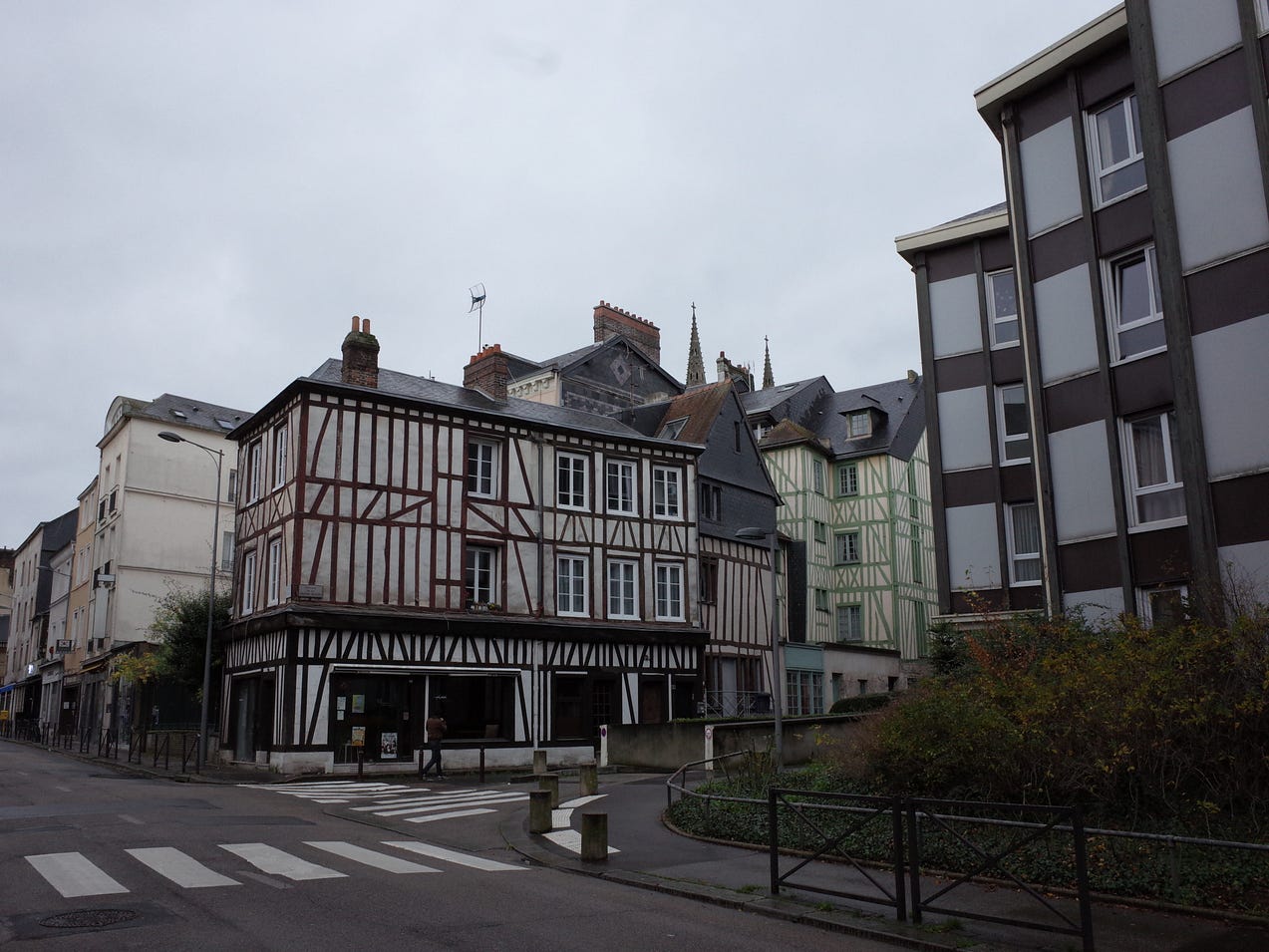
Given the fact that Christmas day was a day ago, the streets were exceptionally quiet. Many stores were closed, but for many others it was business as usual.

Rouen is perhaps most famous for Jeanne d’Arc or Joan of Arc, a patron saint of France who famously believed she was called upon by God to lead France into battle. After being accused of heresy, she was burned at the stake here in Rouen. Today, she’s both a feminist icon — for her subverting of gender roles by dressing in male clothing — and an icon of the French far right, who saw her as a symbol of ‘Frenchness’.

In the historic part of town, there were a lot of shops selling arts and crafts. Based on their wares and the shop designs, you could tell this was the bobo part of town.

I later passed a street that had what appeared to be a little creek running through it.

If you closed your eyes almost completely and used a bit of imagination, you could almost feel like you were in Venice.

I eventually reached the cathedral where Joan of Arc was executed. Surprisingly enough, despite being one of the major tourists sites of the city, there was hardly anyone around — although, to be fair, that might have been because the cathedral was closed. Still, you would have thought that people would at least be looking at the cathedral from the outside.

I had bought myself a tarte aux pommes from a local pâtisserie. This would turn out to be the best apple pastry I had ever tried. It blew the one at my local bakery near work out of the water. Normandy is known for its apples — and honestly, it showed.

While I was eating it, a guy came out of nowhere. Carrying a stack of books, he told me that he’d written a novel and asked if I would like to buy a copy. I said no, but felt for him as well. He didn’t seem to be having much luck.

I walked back towards the busier part of town, passing the Palais de Justice with LEGO blocks lodged in between the hollowed-out parts of the wall. Apparently, it was a work of art called Dispatchwork Rouen by Franco-German artist Jan Vormann, who used old LEGO blocks to bring a new perspective to the bombings of 1944.

It turns out that I can’t for the life of me pronounce ‘Rouen’. When I later told my colleagues that I had visited Rouen, they thought I had said Wuhan, which had been in the news that year for all the wrong reasons.

My inability to say the word made me realise just how subtle some French vowel sounds can be. The sounds simply don’t exist in English, and so you have to really train your ear to hear them.

As I made my way to the Place du Vieux Marché in the centre of the city, I came across Wuhan’s famous market. There were a lot of shops selling seafood and other products. I decided to get myself a Marmite Dieppoise, a fish stew hailing from the coastal city of Dieppe containing fish, mussels and crème fraîche.

But after buying it, I suddenly realised that I’d have to heat it up. And I wasn’t sure if I had a microwave in my hotel room. Sure enough, I didn’t have one. So I went to a local Franprix supermarket, put it in the microwave there and blasted away. I would have to go back to my room and eat it there for dinner.

There were some Russian international students in the supermarket, which was just down the road from a university. “Do you speak English?” They asked the staff member at the counter. “Non,” he replied.

If memory serves, I then walked along the banks of the Seine, before crossing the bridge to the other side of the river. It’s strange to think that Rouen, like Paris, is based around the Seine. You could be forgiven for thinking that Rouen is a mini Paris, even if the cities are quite different from one another.
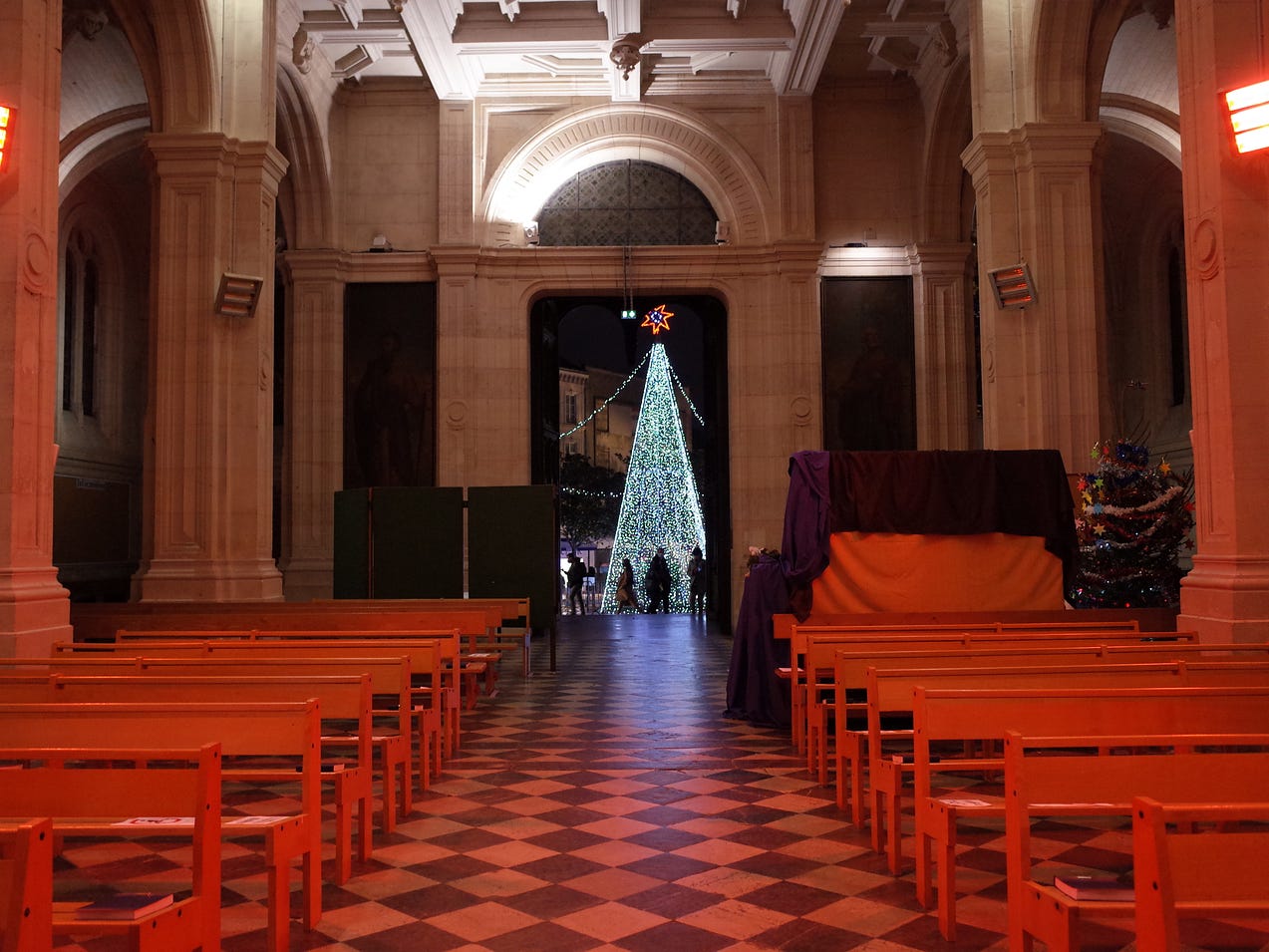
There was a square with a large collection of white Christmas lights in the shape of a fir tree. It always feels a little strange to see Christmas celebrations after Christmas is over, but I supposed the festive period lasts until New Year’s.

I entered a cathedral and came across a nativity scene.

After leaving the cathedral, I wandered around this southern part of town. It became pretty apparent that it wasn’t the most touristy area. There were a lot of modern offices, schools and residential buildings. I entered a shopping mall, but there wasn’t much to see — from a visitor’s perspective anyway.

I crossed the bridge again and made my way back to the historic area. There were Christmas trees all around the Notre Dame cathedral.

The lights illuminated the intricate reliefs on the ancient gothic building.

A band was playing The Beatles’ Don’t Let Me Down in the main square.

As I was walking down a nearby street, for a short moment I thought I saw a graffiti of Paul McCartney on the wall.

The number of shops selling Christmas decorations was honestly pretty mind-boggling. It made me wonder how they’d get by once Christmas was over.

In the Place du vieux marché, I entered a nearby cathedral. But as I got inside, I realised there was a service taking place, so I turned around and headed out.

As I was walking around, I found more Christmas decorations. A man and his daughter got on board a carousel. As 6pm was approaching, I headed back to my hotel. Covid might not respect curfew, but we had to.

The next morning, I got up and headed outside at around 7.30am. The sky was dark and the streets almost empty.

I felt like I had the city to myself.

It was spitting ever so slightly. Enough to make the footpath ever so slippery but not too much to make me soaked.

The sound of raindrops upon the cobblestones was straight out of a Tarkovsky film.

I headed towards Notre Dame.

The square was almost empty.

And, save for a few worshippers, the cathedral was too.

Given how gloomy it was outside, you could barely tell if it was daytime or night.

But after I headed outside, the sky became more light, if not less grey.

I felt like I was in some kind of cyberpunk film set in Medieval Europe.

I would later head back to my hotel, get my luggage and take the train back to Paris. It wasn’t easy to travel with all the Covid restrictions, but I’m glad that I went to Rouen when I did. The city was charming, if a little under the weather, and the pandemic would have made things complicated.
I can only imagine that the city would have been even more lively at any other time of year — or on any other year, for that matter.
I guess there’s only one way to find out.


